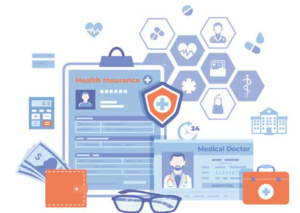 William Osler, MD, had an idea.
William Osler, MD, had an idea.
Many institutions lay claim to the legacy of Osler, and by the time he arrived at Johns Hopkins Hospital in 1889 to become the first physician in chief of the institution, he was already widely acknowledged for his clinical acumen. He now wanted to spread that clinical acumen around.1
His idea was to bring medical trainees to the bedside.
To start, he thought that medical students, during their third and fourth years of medical training, should be assigned to clinical clerkships, in which they would gain direct experience working with patients. To his mind, however, this was not enough training to create a true physician. After graduating from medical school, physicians would spend several years living on hospital grounds to immerse themselves in the care of the infirm. These residents and medical students would join Dr. Osler as he personally examined each patient in the open ward. Because inpatients at Johns Hopkins Hospital were housed in an octagonal building, the patient beds were arrayed in a single room, like the spokes of a wheel. In the process of visiting each patient, medical personnel found themselves walking in a large circle as they circumnavigated the perimeter of this octagonal building. Osler’s staff, therefore, dubbed the activity rounding.2
This style of medical education has long been standard nationwide. In William Osler’s time, however, the state of medical education was, quite frankly, a mess. First, no one could agree on what being a doctor actually meant. There were physicians like William Osler, who had trained in Europe and brought a European style of practice back to the States. Of course, this style included such practices as bloodletting, which would now be considered anathema. Because European medicine included treatments that could be worse than the diseases they purported to treat, two additional training systems had formed in the U.S.
Alternative Education
One school was founded by Samuel Thomson, a self-taught herbalist, who created a distinctly American approach to healthcare.3 Thomsonians eschewed expensive European medicines in favor of natural approaches that purged patients of poisons by restoring the body’s natural heat. The Thomsonian tradition gave rise to eclectic medicine, another distinctly American approach to healthcare that emphasized the use of herbs and physical therapy to pave the path to wellness.
Another school was founded by Samuel Hahnemann, who developed homeopathy, in which practitioners posit that small amounts of toxic substances can cure the diseases they would normally cause.4 Evidence of the influence of homeopathy is the expression hair of the dog that bit you, which is now primarily used as an excuse to add a slug of whiskey to one’s coffee the morning after a bender.



